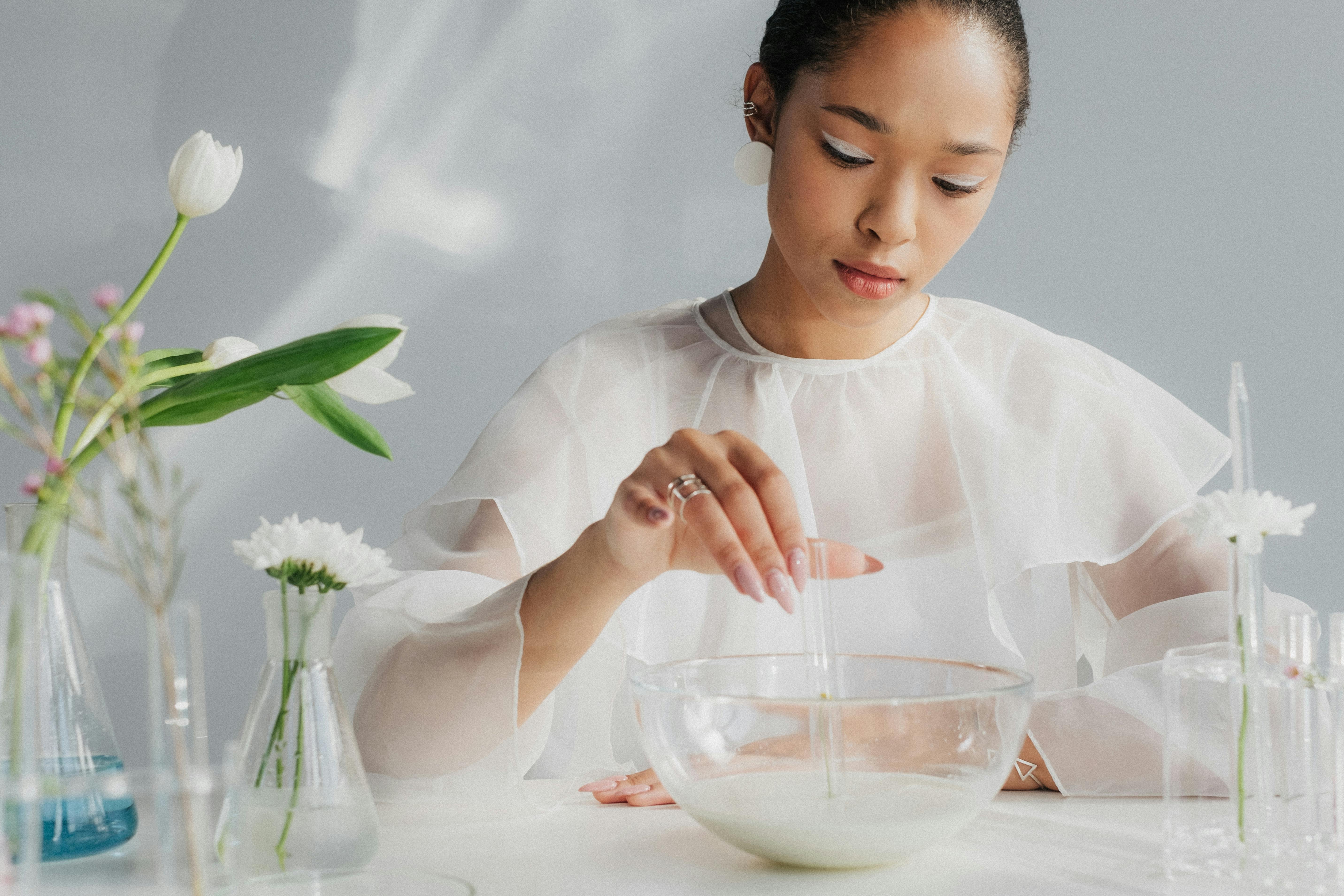Have you ever seen a bad pineapple? It can be difficult to identify as they look almost the same as a good one. However, there are some key characteristics you should look out for when assessing whether a pineapple is going bad or not. In this article, we’ll discuss what a bad pineapple looks like and how to tell if it’s still safe to eat.A bad pineapple is one that is overripe, underripe, or has been damaged in some way. It may have dark spots or discolorations on the skin, feel mushy or soft when squeezed, and have a sour smell instead of a sweet one. The flesh can also be dry and stringy, or may contain brown spots or even mould.
Identifying A Bad Pineapple
Pineapples are a delicious, sweet and juicy tropical fruit; however, sometimes it can be difficult to determine if a pineapple is fresh and ripe or not. There are a few tell-tale signs that can help you identify a bad pineapple.
The first sign of a bad pineapple is its appearance. If the pineapple looks dull or has discolored spots on its skin, this is usually an indication that it is not good to eat. The skin should appear bright and vibrant, without any discoloration or bruising. Additionally, you should check to make sure the pineapple isn’t too soft or mushy; this could be an indication that it has been sitting in the grocery store for too long.
The next thing to look for is the smell of the pineapple. If it has a sour or unpleasant odor, this is usually an indication that it is not fresh and ripe. A ripe and fresh pineapple should have a sweet smell with only faint hints of acidity.
Finally, you should also feel the weight of the pineapple in your hand; if it feels unusually light for its size, this could also be an indication that it is not fresh or ripe. In general, pineapples should feel heavy for their size and have some give when pressed with your fingers.
By following these tips and using all your senses when selecting a pineapple, you will be able to ensure that you pick one that is fresh and ripe for eating!
Appearance
A bad pineapple can be identified by its appearance. It will be yellow or green in color, instead of the usual golden-brown hue that is a sign of ripeness. The skin will also feel hard and not give when you press it. The leaves on top may also be limp and dry.
Smell
In addition to its unappealing appearance, a bad pineapple will have an unpleasant smell that is sour and fermented. This smell may also be slightly sweet or musty, but should not smell at all like the typical sweet scent of ripe pineapple.
Taste
If you attempt to taste a bad pineapple, it will likely have a bitter or tart flavor instead of the sweet taste you would expect from a ripe one. The texture may also be somewhat dry and mealy.
Common Signs Of A Bad Pineapple
A ripe pineapple is a sweet and juicy fruit that is full of flavor and nutrition. But when a pineapple isn’t ripe, it can be unpleasantly sour and unpleasant to eat. Knowing how to tell if a pineapple is bad can help you avoid buying or eating an unripe one. Here are some common signs of a bad pineapple:
1. Brown Spots – When a pineapple starts to go bad, it may develop brown spots on the outer skin and the inner flesh. The brown spots indicate that the fruit has started to rot, and should be avoided or discarded.
2. Soft Flesh – A ripe pineapple should have firm flesh that is slightly springy when pressed. If the flesh feels soft, mushy, or overly squishy, then it is likely past its prime and should not be eaten.
3. Molds – If you see any molds on the outside of the pineapple, then it has likely gone bad and should not be eaten. Molds are usually visible as fuzzy patches or other discolorations on the outside of the fruit.
4. Off-Smelling Aroma – A ripe pineapple will have a pleasant sweet aroma. But if there is an off-smelling aroma coming from the fruit, then it has likely gone bad and should not be eaten.
5. Discolored Leaves – The leaves on top of the pineapple can also be an indicator of freshness. If they are green and fresh looking then the fruit is likely still good to eat. But if they look wilted or discolored then it may be past its prime and should not be eaten.
How To Tell If A Pineapple Is Ripe Or Not
Pineapples are a delicious and nutritious fruit, but it can be tricky to know when they’re ripe. Knowing how to tell if a pineapple is ripe or not can help you pick the perfect one for your favorite dishes. Here are some tips on how to tell if a pineapple is ripe.
First, look at the skin of the pineapple. A ripe pineapple will have a smooth and firm outer skin that has an even yellow or golden hue. Avoid pineapples with brown spots, which indicate that it’s overripe or damaged.
Next, feel the texture of the pineapple. You should be able to tell if it’s soft or hard by gently pressing your fingers against it. A ripe pineapple should give slightly, but not be too soft or mushy.
The smell is also important when determining whether a pineapple is ripe or not. A ripe fruit will have a sweet aroma that will fill the air around it. If there’s no smell or an unpleasant odor, then you should avoid buying it as this means it’s overripe or going bad.
Finally, don’t forget to check the leaves at the top of the pineapple. If they are green and firm, then this indicates that the fruit is still fresh and ready to eat!
By following these tips on how to tell if a pineapple is ripe or not, you can ensure that you pick up only the best fruits for your favorite recipes!

What Does A Rotten Pineapple Look Like?
A rotten pineapple is easily identifiable due to its distinct smell and appearance. It will have a soft, mushy texture and will often be discolored. The outside of the pineapple may appear wrinkled or browning and the leaves may also be wilting. The color of the flesh of a rotten pineapple is usually darker than that of a fresh one, and it may be slimy to the touch. There may also be black or white spots on the fruit, which are signs of decay. If you cut open a rotten pineapple, it will have an unpleasant smell and its consistency will be off – usually it will be very soft or watery.
Overall, a rotten pineapple is not something you want to eat – it can make you sick! If you notice any signs of spoilage on your fruit, it’s best to discard it right away.
Determining the Quality of a Pineapple
Pineapples are a delicious, sweet, and tart fruit that can be enjoyed in a variety of ways. They can be eaten fresh, as part of a salad, or used in recipes. But how can you tell if the pineapple you are about to purchase is of good quality?
It is possible to determine the quality of a pineapple by looking at it. Look for pineapples that have bright green leaves and an even yellowish-brown color. The skin should also be firm to the touch and have an aromatic smell. If the pineapple has any soft spots or discoloration, it is likely overripe and should be avoided.
Additionally, look for pineapples with thick, juicy flesh that gives slightly when lightly pressed. If you plan to peel and eat the fruit straight away, make sure to select a ripe pineapple as unripe fruit will not taste as sweet. If you plan on using the pineapple in a recipe later on, then select one that is slightly under-ripe.
Finally, check for any signs of mold or decay as these can signify that the pineapple is past its prime. When selecting pineapples from multiple options, opt for those with no signs of decay or mold since they are likely fresher than those with visible damage.
By following these tips when selecting pineapples at your local grocery store or farmers market, you will be able to choose high quality fruit every time!
Smell
One of the easiest ways to tell if a pineapple is spoiled is to smell it. A fresh pineapple should have a sweet, tropical aroma. If the pineapple has an off or unpleasant smell, it is likely spoiled and should be discarded.
Appearance
Another way to tell if a pineapple is spoiled is to look at its appearance. Look for bruises, mold, and discolored spots on the skin. The color of the rind should be yellow or light brown with no signs of decay. If the rind appears slimy or mushy, it likely is not safe to eat.
Texture
When selecting a pineapple, it should feel firm and not too soft. If the texture of the fruit feels mushy or overly soft when gently pressed with your fingers, it may not be safe to eat. Additionally, if there are any dark spots on the fruit’s surface, these areas may be rotten and spoil the entire pineapple.
Overall, one should use their senses when determining if a pineapple is spoiled or not. If any sign of spoilage appears on the fruit’s surface, it should be discarded immediately as consuming spoiled produce can lead to food poisoning or other serious health issues.

Conclusion
Bad pineapples are easily identifiable if you know what you’re looking for. A bad pineapple will have brown or black spots on the outside, a mushy texture when you press it, and a sour smell. It will also feel much heavier than a ripe pineapple due to its higher water content. If any of these signs are present, it is best to avoid eating that pineapple.
The best way to ensure that the pineapple is fresh and ripe is to buy it from a reputable source, such as a grocery store or farmer’s market. Additionally, always take the time to inspect the fruit before buying it to ensure it does not have any signs of being bad.
By following these simple tips, you can ensure that your next pineapple purchase will be sweet and juicy!



